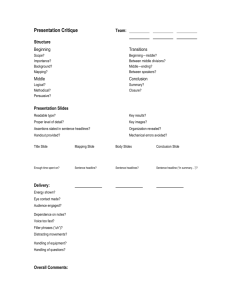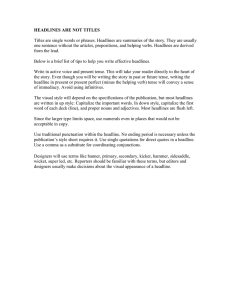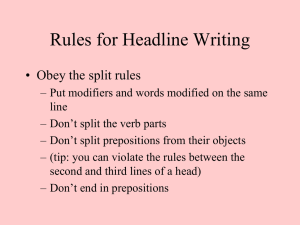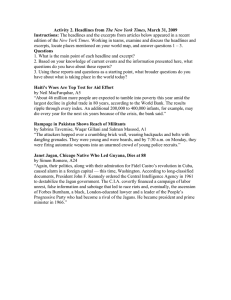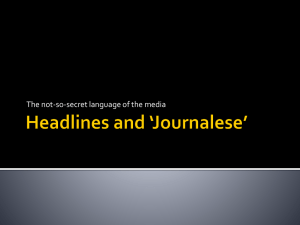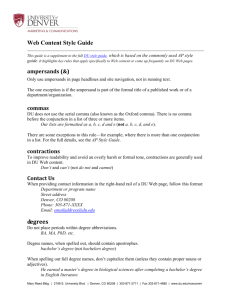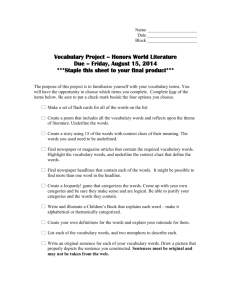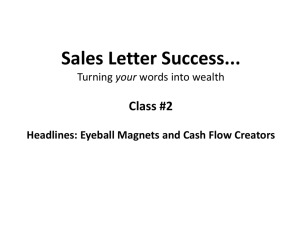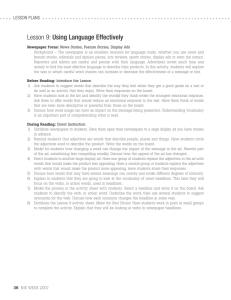Headlines
advertisement
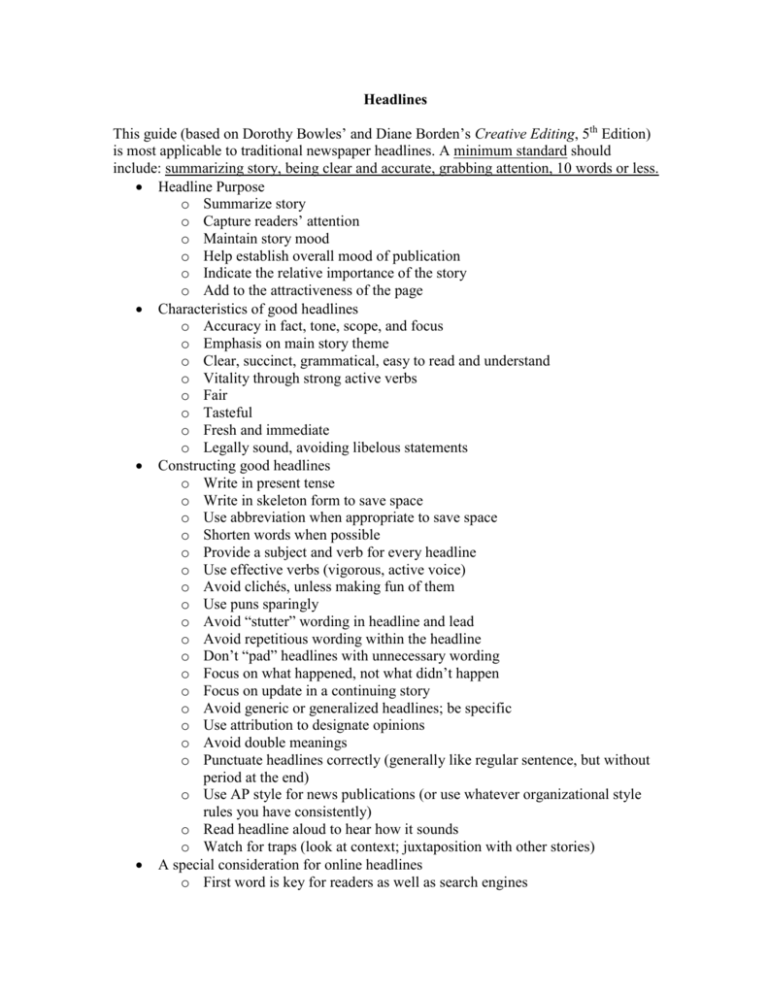
Headlines This guide (based on Dorothy Bowles’ and Diane Borden’s Creative Editing, 5th Edition) is most applicable to traditional newspaper headlines. A minimum standard should include: summarizing story, being clear and accurate, grabbing attention, 10 words or less. Headline Purpose o Summarize story o Capture readers’ attention o Maintain story mood o Help establish overall mood of publication o Indicate the relative importance of the story o Add to the attractiveness of the page Characteristics of good headlines o Accuracy in fact, tone, scope, and focus o Emphasis on main story theme o Clear, succinct, grammatical, easy to read and understand o Vitality through strong active verbs o Fair o Tasteful o Fresh and immediate o Legally sound, avoiding libelous statements Constructing good headlines o Write in present tense o Write in skeleton form to save space o Use abbreviation when appropriate to save space o Shorten words when possible o Provide a subject and verb for every headline o Use effective verbs (vigorous, active voice) o Avoid clichés, unless making fun of them o Use puns sparingly o Avoid “stutter” wording in headline and lead o Avoid repetitious wording within the headline o Don’t “pad” headlines with unnecessary wording o Focus on what happened, not what didn’t happen o Focus on update in a continuing story o Avoid generic or generalized headlines; be specific o Use attribution to designate opinions o Avoid double meanings o Punctuate headlines correctly (generally like regular sentence, but without period at the end) o Use AP style for news publications (or use whatever organizational style rules you have consistently) o Read headline aloud to hear how it sounds o Watch for traps (look at context; juxtaposition with other stories) A special consideration for online headlines o First word is key for readers as well as search engines Leads Based on Melvin Mencher’s News Reporting and Writing, 11th Edition. How reporters think leads Reporters ask themselves four questions in their search for suitable leads to their stories: What was unique or the most important or unusual thing that happened? Who was involved — who did it or who said it? After answering these questions, the reporter seeks words and a form that will give shape to the response by asking these questions: Is a direct lead or a delayed lead best? (Does the theme of the story go in the first sentence, or somewhere within the first few paragraphs?) Is there a colorful word or dramatic phrase I can work into the lead? Contents of a direct lead Specific information about what happened or what was said. When the event occurred. The location of the event. The source of the information. Contents of a delayed lead Delayed leads start with something to catch the reader’s attention, and therefore they delay the real stuff of leads — the 5W’s, the message and the angle. So, they need a “nut graph,” a paragraph following the attention-grabber that does the heavy lifting. The nut graph supplies the 5W’s typically contained in a direct lead. Things to keep in mind Good reporting makes for good leads. Ask better questions to get more specific answers. Remember S-V-O. Most leads should begin with the subject, closely followed by an active verb And concluding with the object of the verb. The S-V-O structure has an internal imperative: It directs the reporter to write simple sentences with one main clause. Don’t bury the lead. That is, don’t place your main idea somewhere in the body of the story.
